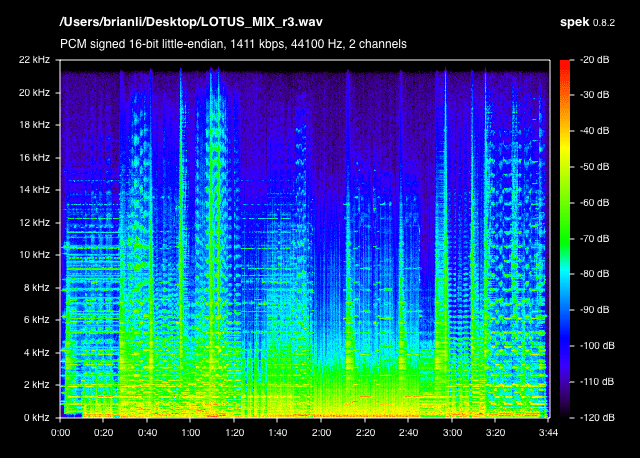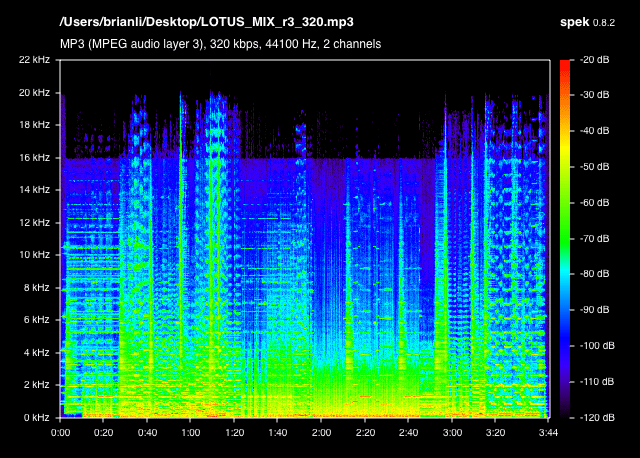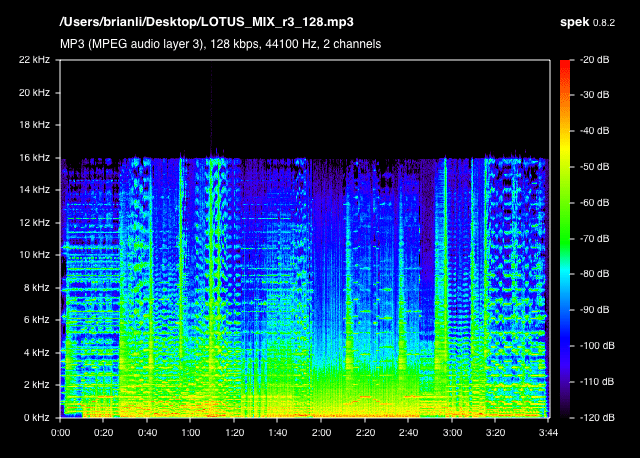A music portfolio is all about wellharing your creations with the world. Whether it’s to attract potential employers or just for fun, a portfolio should always represent your music at its best. In addition to a nice looking website, you also need to think about sound quality. I’ve seen a lot of people use SoundCloud to host their music portfolio. This is something you should never do. Why? Because SoundCloud encodes all your music to 128kbps MP3 for streaming.
By today’s standards, 128kbps MP3 is pretty low quality. Spotify’s free tier streams at 160kbps for desktops, with the superior Ogg Vorbis codec. Spotify’s paid premium service can stream up to 320kbps Ogg Vorbis, which can be considered “transparent” for 99% of the population. Apple Music streams at 256kbps AAC, and TIDAL even streams lossless for $19.99/month. Meanwhile, even SoundCloud’s paid service streams at a measly 128kbps with an outdated codec.
A spectrogram is a visual representation of the spectrum of frequencies in a sound or other signal as they vary with time or some other variable.
Here’s a song I recently mixed, along with its spectrogram. Be aware the file size is approximately 40MB, so don’t stream it if you’re data-concious.

As you can see, the song’s frequency content goes well beyond 20KHz.
Now, here’s the song in 320kbps MP3 format, along with its spectrogram.

In this spectrogram, a significant amount of content over 16KHz has been removed. When comparing with the WAV’s spectrogram, you can see most of the content that was removed was dark purple — so really soft (~-110dB) high frequency content. The content sitting between -100dB and -50dB above 16KHz is still present because frequencies up there are important!
Finally, here’s the song in 128kbps MP3 format, along with its spectrogram.
Ready?

Recall that 128kbps MP3 is the same format used by SoundCloud. From the spectrogram, you can see there’s a hard cut at 16KHz. This is especially noticeable at the cymbal swell around 1:09. The 128kbps encode is noticeably muddier and less exciting than the 320kbps and WAV files.
Despite people saying SoundCloud sounds “just fine,” it’s hard to ignore the facts. 16KHz-20KHz is where your track’s “air” and “sizzle” live. Filtering out that content can make your music sound less alive and less exciting. This is obvious from the musical examples provided above.
I’m not saying SoundCloud is a bad service. It’s far from that. In fact, I almost always cross-post my mixes to SoundCloud. However, I don’t use their embeddable web player for my music portfolio because I want potential employers and influencers to hear EVERYTHING.
You should too.
So what are your options? There are a plethora of paid services out there for hosting music, but there are also free options as well. If you have a web portfolio, chances are you can just embed audio links directly to your website. Where you host the files is your choice. I use Amazon S3 and CloudFront for hosting my audio files, but DropBox is a more user-friendly option. You can also upload directly to your web server, but that may end up causing performance issues if a lot of people are accessing your website. Whatever you do, get your portfolio off of SoundCloud.